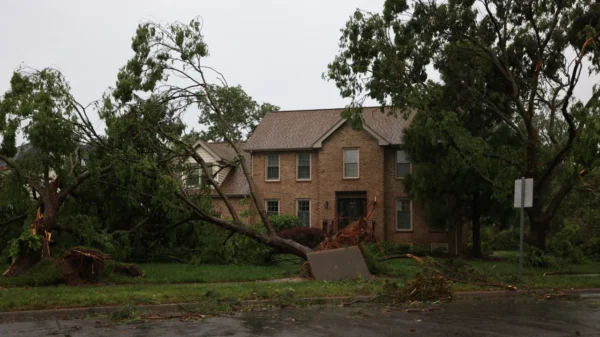Chuck Martin looks back at Miami’s 2022 football regular season and simultaneously finds it frustrating, disappointing and rewarding.
Frustrating and disappointing because the RedHawks were expected to contend for the Mid-American Conference East Division championship and berth in the MAC championship game before finishing tied with Kent State for fourth place in the six-team division.
Rewarding, “in many ways,” Martin said, because Miami came from behind twice in its last two games to pull out wins, 29-23 at Northern Illinois and 18-17 at home against Ball State, and finish 6-6 overall, qualifying for a bowl game that turned into an invitation to the HomeTown Lenders Bahamas Bowl against the University of Alabama-Birmingham of the Sun Belt Conference.
The RedHawks and Blazers (6-6) are scheduled to meet in the first game of the bowl season on Dec. 16 at 11:30 a.m. The game will be televised on ESPN.
It’s been a grinding year,” Martin, the nine-year Miami coach, said Tuesday. “You lose your starting quarterback in the opener, and things are turned upside down. It was like were plodding through every week. There was no margin for error.
Offensively, we were challenged all year, but the kids kept playing. There were lots of reasons to not have hope. We had tons and tons of injuries.
hhis was one of the fastest seasons ever,” he added. “There was always something.”
Among the casualties was fourth-year junior quarterback Brett Gabbert, who was lost late in the season-opening 37-13 loss at Kentucky and again in the 37-21 loss at Ohio in Week 10. Redshirt freshman Aveon Smith took over both times and produced an overall 5-3 record. He rebounded from being 12-for-36 at one point against Ball State to finish 18-for-46 and lead the RedHawks to two touchdowns in the final six minutes.
He’s got to get better, but everybody rallied around him,” Martin said. “He played his best football in those last two drives.”
The Bahamas Bowl will be Miami’s third straight and 14th overall – the fourth under Martin, who recalled the team’s first appearance during his tenure. He led the RedHawks to the St. Petersburg (Fla.) Bowl in 2016, where they suffered a narrow, 17-16 loss to Mississippi State of the Southeastern Conference.
Martin, who ranks among the top 17 Football Bowl Subdivision coaches in terms of tenure with their current programs, has detected a change in Miami’s culture.
T the frst bowl game we went to, it was like Mardi Gras around here,” he recalled. “Now, we’re 6-6 and going to the Bahamas Bowl, and it’s not good enough, but the coaches and players stuck together and stuck together and stuck together and stuck together, and now we get what will be a once-in-a-lifetime experience. That’s quite a reward.”
Gabbert, junior offensive guard Caleb Shaffer and junior cornerback John Saunders Jr. won’t be among the RedHawks making the trip to Nassau for the bowl game after entering the transfer portal on Monday. Martin remains intrigued while watching college football adjust to the new realities of transfers who can immediately play at their new venues and the impact of the name, image and likeness scenario. He was eager enough to bring it up on Tuesday without being asked.
Writers were saying that signing day has lost its luster, and that Monday was the biggest day in college football,” he said. “A lot of people are saying it’s terrible because there’s no loyalty. Some of our kids aren’t going to the Bahamas, but I’m not mad at them. They don’t take their scholarships with them.
I was looking at high school tape, transfer tape and portal tape. Next thing I know, it’s been 13 hours. I started at 7 a.m. and I looked at my watch and it was 8 p.m. It’s become a thing where it’s who can go the longest without sleep. We were talking college football on December 5 and nobody was playing.
“It’s like Mardi Gras. It’s like the wild, wild West. It’s a circus.”















































